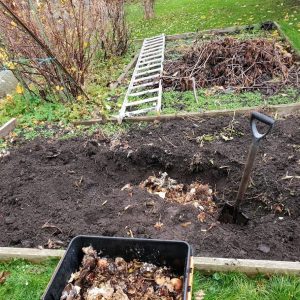A Beginner’s Guide to Permaculture Gardens
Permaculture, the name of which is a portmanteau of ‘permanent’ and ‘agriculture’, is growing in popularity around the world. The permaculture gardening is a way of working with nature, and of enabling each part of an environment to work together in harmony.
Image Source: Unsplash
The core tenets of permaculture gardens are ‘care for the earth’, ‘care for the people’, and ‘fair share’ (taking no more than what we need). It can be a great way for new and experienced gardeners alike to enjoy gardening. Should you choose to grow a permaculture garden, there are a few things you might like to know. We’ve put together a beginner’s guide to permaculture gardens to help:
Consider the permaculture principles
Before you get started, it’s important to familiarise yourself with the 12 principles of permaculture. These are:
- Observe and interact – design solutions, based on nature, that suit your needs.
- Catch and store energy – harvest your fruit and vegetables when they are ripe.
- Obtain a yield – your garden should give you useful rewards. If it doesn’t, you should be changing something.
- Self-regulate and accept feedback – you can’t expect to get everything perfect right away!
- Use and value renewables – avoid consumption: make the most of what nature offers.
- Produce no waste – permaculture gardens should work in harmony with their environment and shouldn’t require waste removal.
- Design from pattern to details – incorporate natural patterns into your garden and adapt to the existing space within your yard. If a particular corner of your garden is susceptible to flooding, consider incorporating a planter or raised flower bed. Merge design and functionality.
- Integrate rather than segregate – position plants correctly for a flourishing ecosystem.
- Use small, slow solutions – small systems are easier to maintain than larger ones.
- Use and value diversity – planting a variety of compatible plants can help preserve soil fertility and reduce vulnerability to outside threats.
- Value the marginal – make use of the edges of your yard and the natural dips and garden beds found within your yard. If you share the edges of your garden with a neighbour, consider working with your neighbour to create a garden that is beneficial to both parties. This way, you not only share physical space and produce, but you can share gardening methods too.
- Creatively use and respond to change – observe your garden and intervene when necessary.

Feeling enthusiastic and inspired after reading these principles? Permaculture gardening could be the perfect activity for you. Carefully consider how each principle can be applied to your unique garden. The time taken to adjust to your new gardening system will be worth it!
Choose your location
The versatility of permaculture gardens allows you to not only make use of the existing natural space within your yard, but also transform even the most unlikely spaces. If you want to take on an unusual project consider upcycling a shipping container. This is particularly useful if you live in an area not suitable for a permaculture garden year-round or if you want to grow plants more sensitive to harsh weather. Sturdy and robust, they’ll protect your plants from the elements while providing a convenient space in which they can grow.
Observe your space
Respecting the strengths and limitations of your local climate is key to successful permaculture. Permaculture gardens will thrive best when they’re made up of plants that suit their environment.
Once you’ve decided where to start your garden, observe your space for a year before you begin if possible. Simply observing should be the first step in your permaculture journey and will help to acquaint you with the mindset of patience.
Consider how weather impacts the area: will the wind be too strong? Does sunlight reach the place you’re intending to plant? When you’re ready, choose plants that will thrive in their new home. You should adapt to your garden, rather than the other way around.
Get into a permaculture mindset
After your permaculture garden is set up and running smoothly, search for other ways your life can reflect eco-friendly values. For example, try to eat local food, reduce and reuse before recycling, and buy second-hand clothing. Permaculture gardening should be low impact, working with rather than against nature. To truly adapt to a permaculture lifestyle, you too should work alongside nature.
Permaculture gardening strives to nourish humans without doing any damage to the environment. It’s the perfect way to have an enriching gardening experience. Start your permaculture journey today and soon you’ll be watching and enjoying your garden for years to come.




